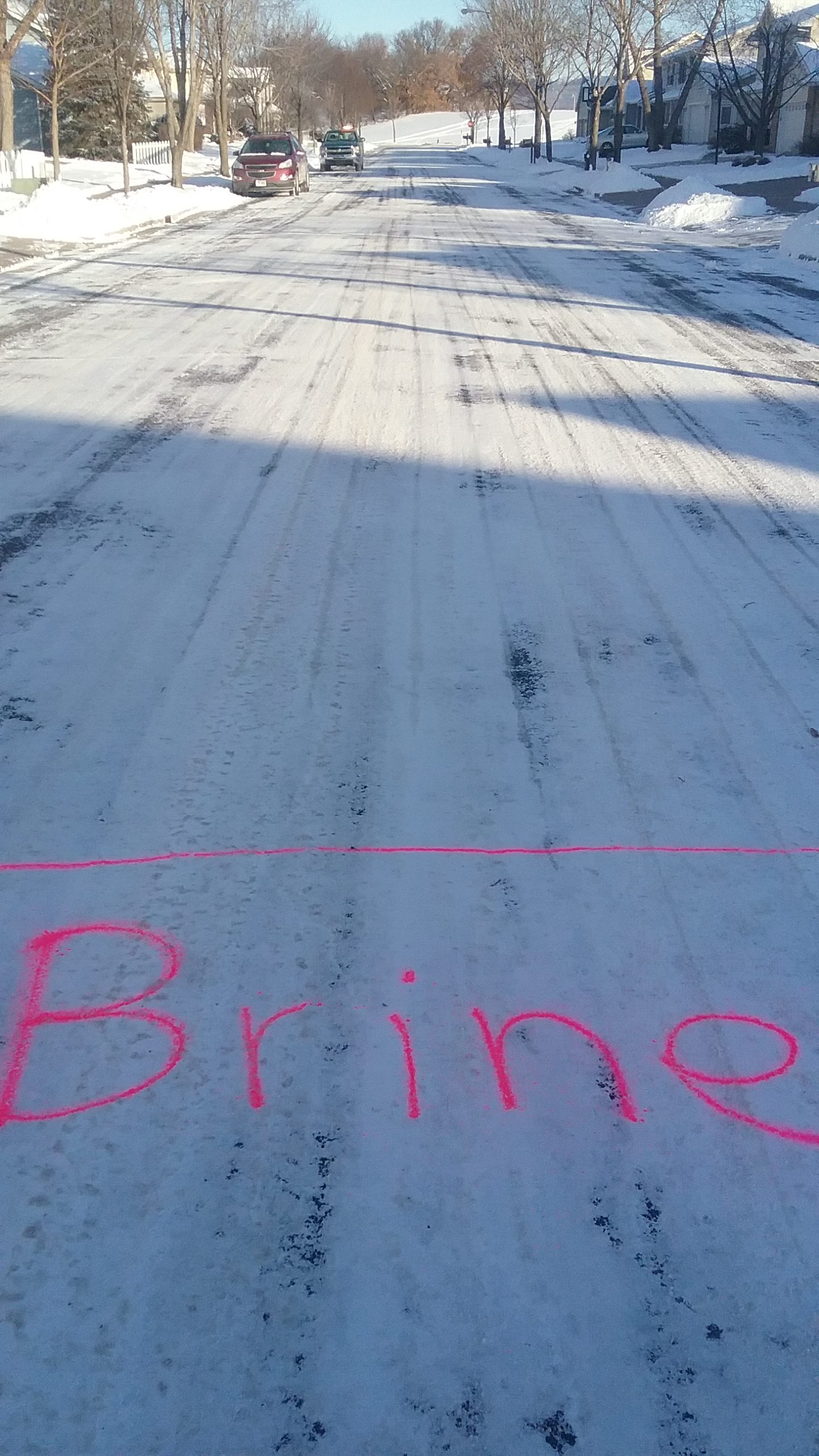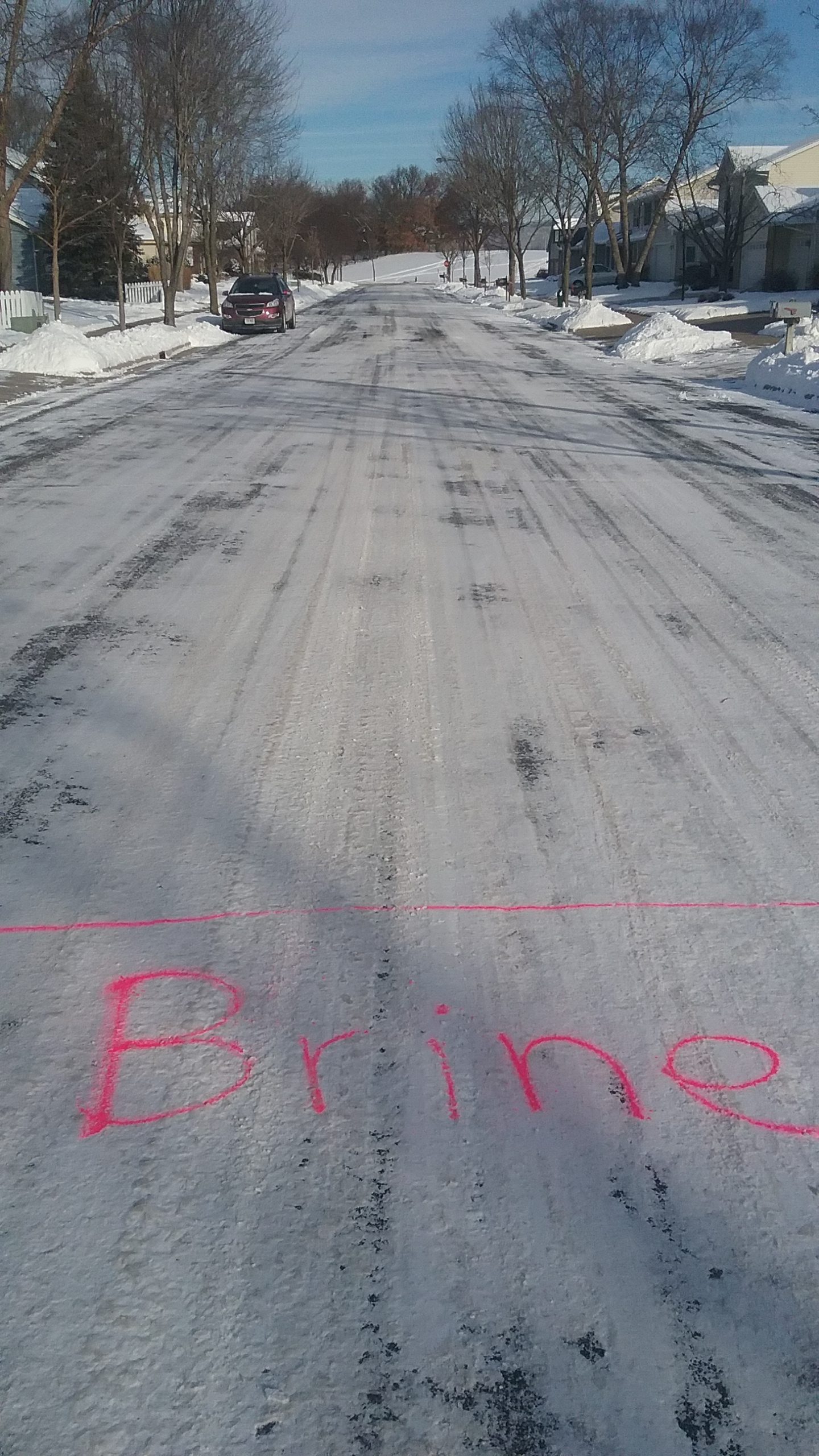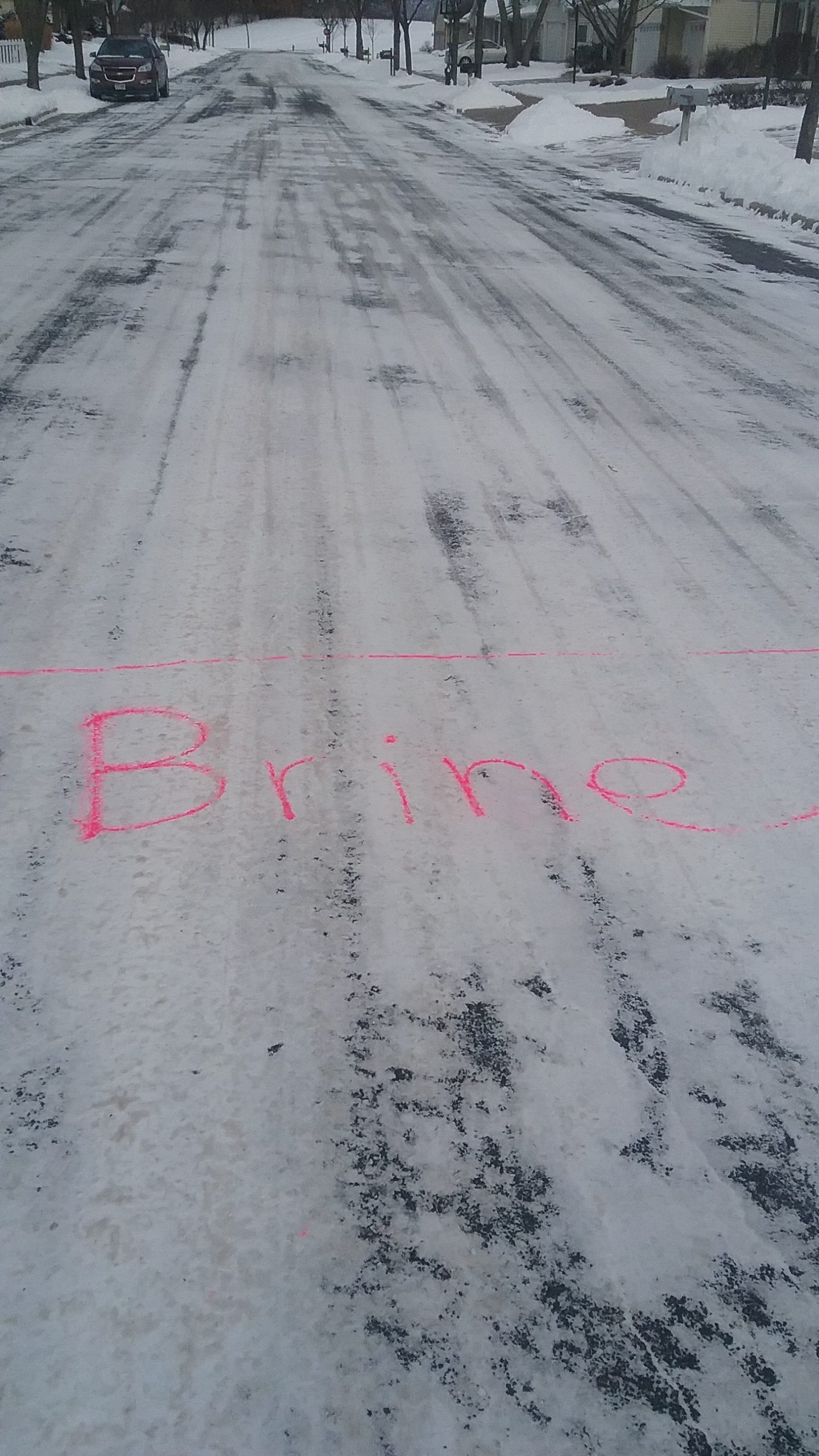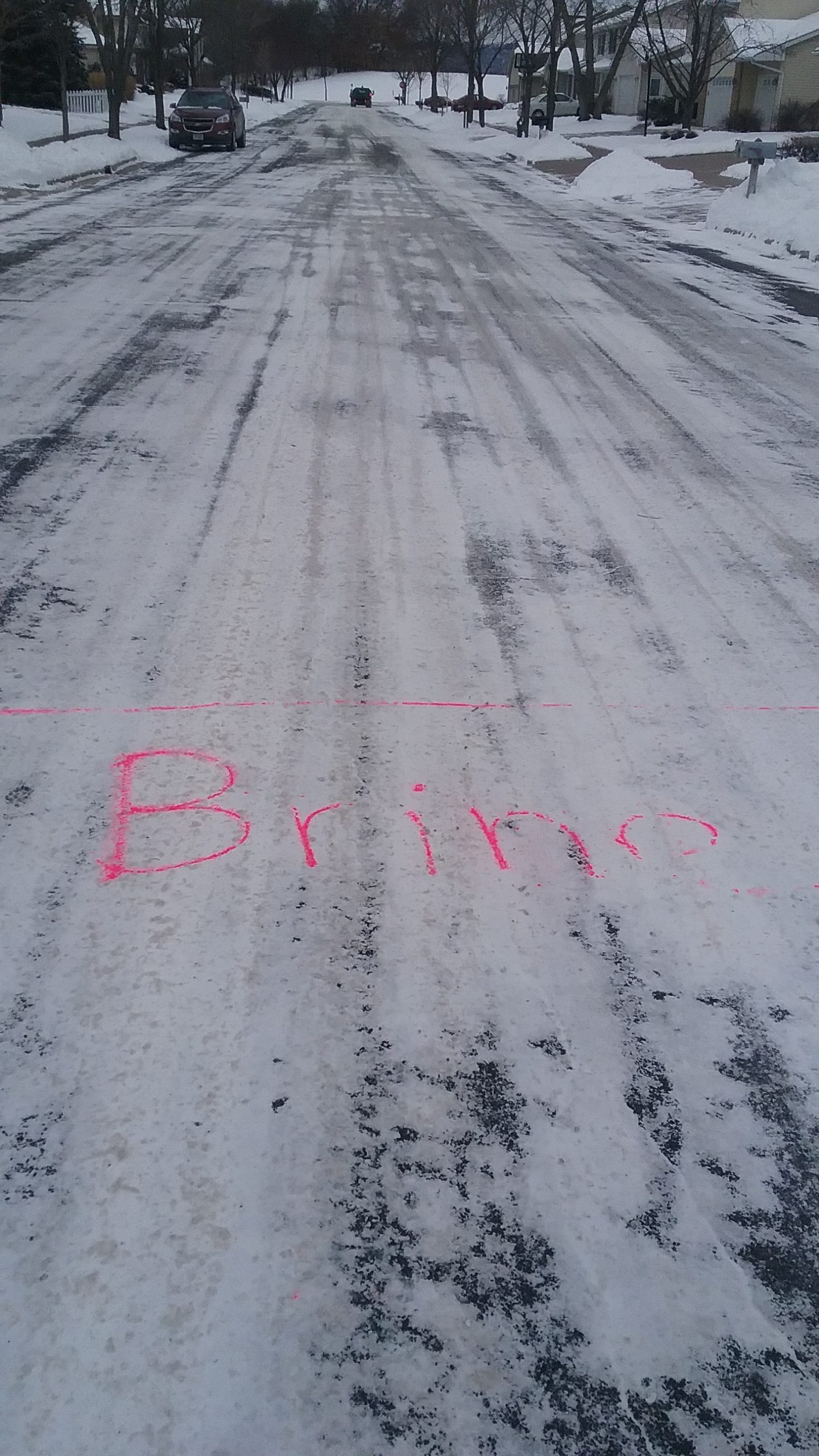Smart Salting
All about winter's saltiest subject.
What, Why, and How of Smart Salting
What is Smart Salting? Smart salting means using salt in a way that keeps sidewalks and roads safe without polluting the environment. Instead of dumping big piles of salt, we use just enough to get the job done. A good rule of thumb is to keep about three inches of space between salt crystals. More salt doesn’t mean more safety — it just causes more pollution.
Why Practice Smart Salting? When we use too much salt in the winter, it washes into rivers, lakes, and drinking water supplies. Once salt gets into freshwater, it’s nearly impossible to remove. It can hurt fish like trout and perch, make water unsafe for swimming and drinking, and even damage cars, roads, and sidewalks. Salt is considered a “forever chemical” — once it’s in the environment, it stays there.
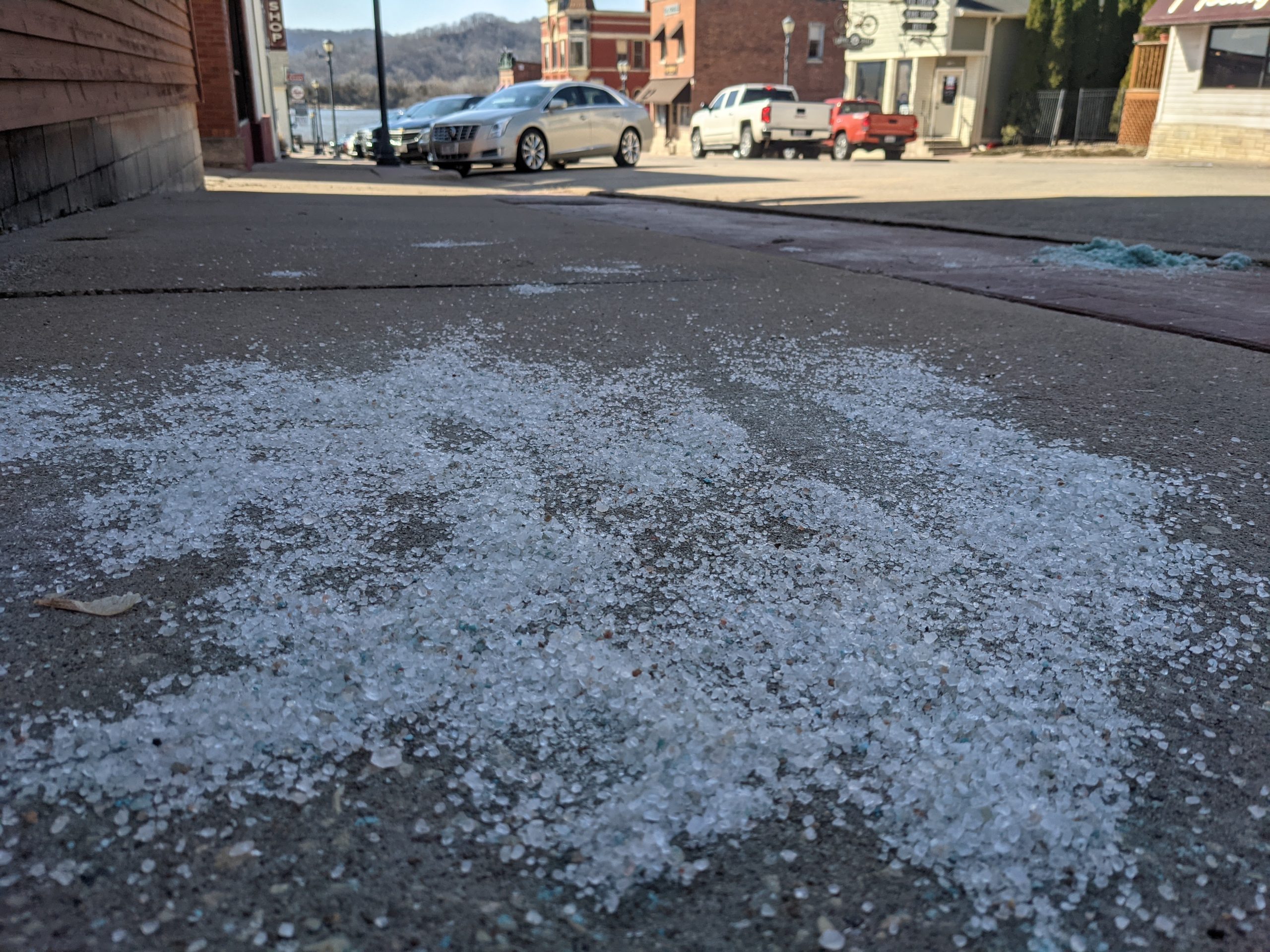
How to Salt Smart
Residential Properties
Even small changes at home can make a big difference!
-
Shovel First
Always clear snow with a shovel or snow blower before putting down any salt. Salt doesn’t work well on top of snow. -
Use the Right Amount
One coffee mug full of salt (about 1–2 cups) is enough for a typical driveway or 10 sidewalk squares. If you see big chunks or piles, it’s too much! -
Watch the Weather
Salt doesn’t work when it’s too cold — especially below 15°F. In that case, use sand or kitty litter for traction instead of salt. -
Sweep Up Leftovers
After the ice has melted, sweep up any extra salt and reuse it next time. That keeps it out of the storm drains. -
Try Alternatives
Some products like beet juice, brine, or eco-friendly ice melt can work better and be safer for plants and pets.
Municipal and Commercial Properties
Cities, schools, and businesses have a big role to play in reducing salt pollution.
-
Calibrate Equipment
Salt spreaders should be checked regularly to make sure they’re putting out the right amount. Too much is wasteful and polluting. -
Apply Brine Before Storms
Spraying saltwater brine on roads or sidewalks before a snowstorm can help prevent ice from sticking, which makes cleanup easier and reduces the need for salt later. -
Train Crews and Contractors
Everyone who applies salt — city workers, maintenance crews, or snow removal companies — should get proper training in Smart Salting practices. -
Track Salt Usage
Keeping records helps cities figure out how much salt they really need and avoid using too much. This also helps set goals for reducing salt over time. -
Store Salt Safely
Salt piles should be covered and kept on solid surfaces to prevent leaching into the ground or nearby drains.
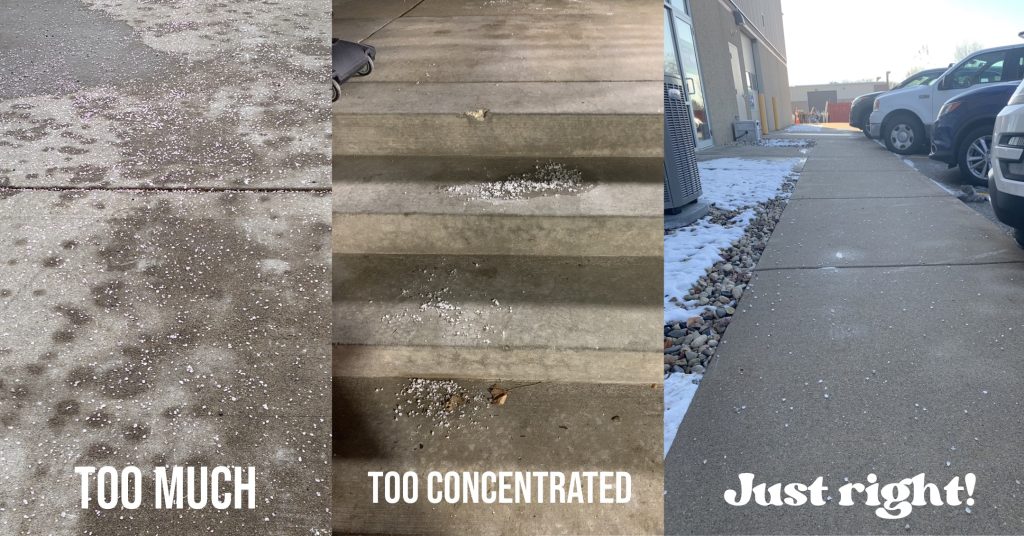
The Truth About Brine
Brine is a liquid mixture that is usually about 23% salt and 77% water. It is sprayed onto roads and sidewalks before snow or ice events. It looks like water when applied, but once it dries, it leaves behind a thin layer of salt. Many municipalities use it throughout the winter as an effective way to clear snow while using less salt, but it is also easy to make and use on residential and commercial properties.
Why Brine is a Smart Choice
1. It Prevents Ice from Sticking
Brine forms a barrier between the pavement and the snow or ice. That means when plows or shovels come through, the snow slides off more easily. This makes roads and sidewalks safer and reduces how much salt you need after the storm.
2. It Saves Salt
Because brine sticks where it’s sprayed, it stays in place. Dry rock salt often bounces into lawns or gets blown away by wind. Using brine can reduce salt use by 30 to 70 percent — which is better for the environment and for budgets.
3. It Works Faster
Since brine is already dissolved, it starts working right away. Rock salt needs time to absorb moisture and melt into the ice — but brine is ready to go as soon as it hits the pavement.
4. It Reduces Pollution
Less salt means less runoff into our rivers, lakes, and drinking water. Brine is one of the best tools we have for keeping freshwater clean during the winter months.
How Is Brine Applied?
-
Brine is sprayed using a tank and sprayer system, which can be attached to trucks, trailers, or even handheld for sidewalks.
-
Stripes of brine can often be seen on roads before a storm — those white lines mean the road is ready and pre-treated!
-
Some cities even reuse waste brine from cheese factories or pickle plants as a more sustainable option.
When Not to Use Brine
While brine is a great tool, there are times when it’s not the right choice:
-
During Rainstorms
If it’s going to rain before the snow hits, the brine will wash away and won’t be effective. -
On Steep Hills
Brine can make steep roads slippery before it dries, which can be unsafe for vehicles. -
On Very Cold Days (Below 15°F)
Brine (and regular salt) doesn’t work well when it’s extremely cold. In these cases, sand might be a better choice for traction.
